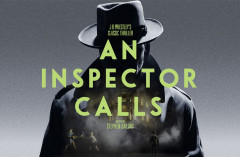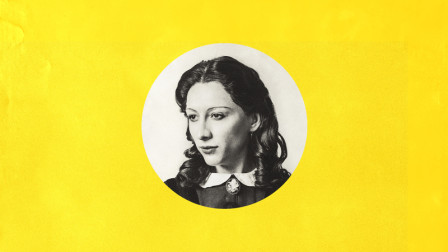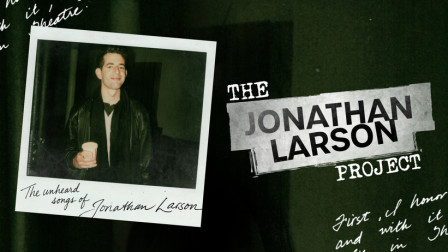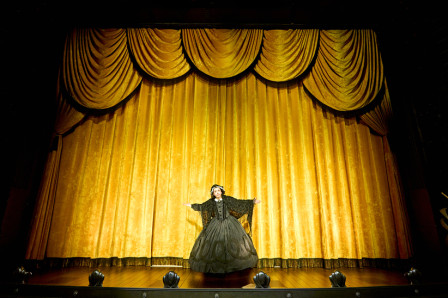An undisputed theatrical masterpiece returns to the West End
 Phil Willmott
18 November, 2016, 20:28
Phil Willmott
18 November, 2016, 20:28
 Theatre is transitory. It's there and then it's gone.
Theatre is transitory. It's there and then it's gone.
Although there have been landmark productions which are widely regarded as having redefined the art form we usually have to take the word of those who were there.
However if you head to the Playhouse Theatre at the moment you can discover one of the most influential productions of the last 50 years, in the latest of many revivals, which demonstrates how striking it still is.
In 1992 Stephen Daldry was a much admired, award-winning, young director, working predominantly on the fringe. Given the chance to stage a production at the National Theatre he returned to J.B. Preistly's stately English Thriller AN INSPECTOR CALLS which he'd previously directed at a regional theatre.
This was a time of great division in British society under the ruthless premiership of Margaret Thatcher who had recently declared that there was no such thing as society and we were all responsible for ourselves.
It seems extraordinary that this creeky old play could be staged in such a way that it would become a powerful statement against Thatcherite self-centred thinking and that a breathtakingly expressionistic staging would be considered for one to the biggest spaces within the National Theatre - and yet something extraordinary happened.
I was lucky enough to catch one of the first previews way back then.
The play is set in an Edwardian Drawing room where an affluent family are visited by a mysterious police inspector who manages to implicate everyone, one by one, in motivating the suicide of a shop girl. As they acknowledge their collective guilt they make must also recognise collective responsibility.
Despite the Edwardian setting Priestly wrote the piece during the bleak period following WWII when a shattered Britain was contemplating the kind of country it wanted to to be in peacetime. 50 years later Stephen Daldry's Britain was also scarred, this time by years of recession and capitalist asset-stripping, and was equally bleak.
Daldry like Priestly didn't want the audience to forget that the plot was a metaphor and that events in the drawing room could reflect the issues of wider society.
His production amidst a bleak WWII bomb site and then a small replica of an Edwardian House, on stilts, emerges spectacularly through the drizzling rain. The front falls away and actors, confined at first to the structure and dwarfing the furniture, play out the action with the characters oblivious to the expressionistic setting.
Soon they are literally too big for their habitat and spill out into the wet cobbles and rubble that maroons them. Not only is this very beautiful, and creates a sense of the epic, but it clearly symbolises that the action has implications far beyond a particular drawing room on any particular night.
The daring staging has subsequently been recreated all over the world and on several other revisits to the West End, where business is often kept buoyant by school parties whose students are studying it.
That said, we haven't seen it in London for a while now and this revival is a great opportunity for a whole new generation to encounter it.
The play has always been a good psychological thriller but Daldry's production made it a masterpiece.
Latest News

 Review Round-Up: OH, MARY! at the Trafalgar Theatre
19 December 2025 at 15:53
Review Round-Up: OH, MARY! at the Trafalgar Theatre
19 December 2025 at 15:53

 The Jonathan Larson Project announces London premiere
19 December 2025 at 10:31
The Jonathan Larson Project announces London premiere
19 December 2025 at 10:31

 Oh, Mary at Trafalgar Theatre Review
19 December 2025 at 09:46
Oh, Mary at Trafalgar Theatre Review
19 December 2025 at 09:46

 Kerry Ellis completes cast for West End concert of Jo - The Little Women Musical
19 December 2025 at 09:35
Kerry Ellis completes cast for West End concert of Jo - The Little Women Musical
19 December 2025 at 09:35